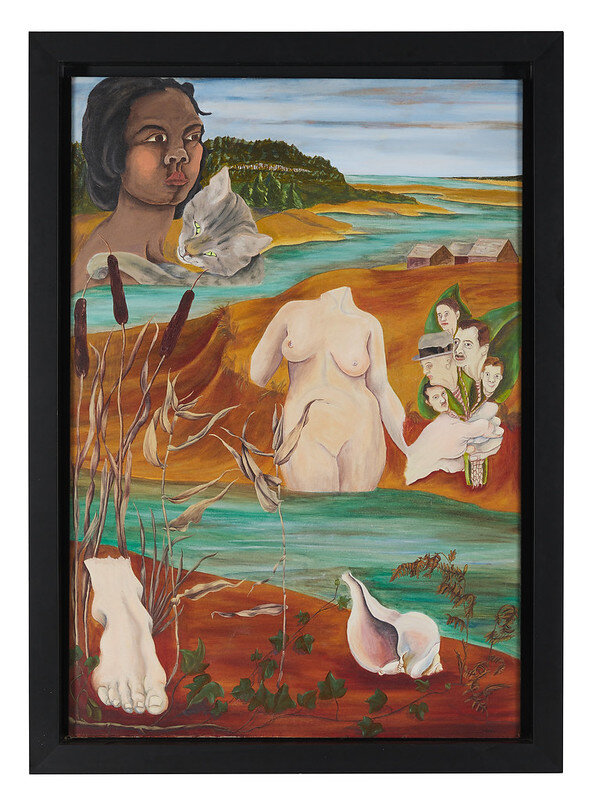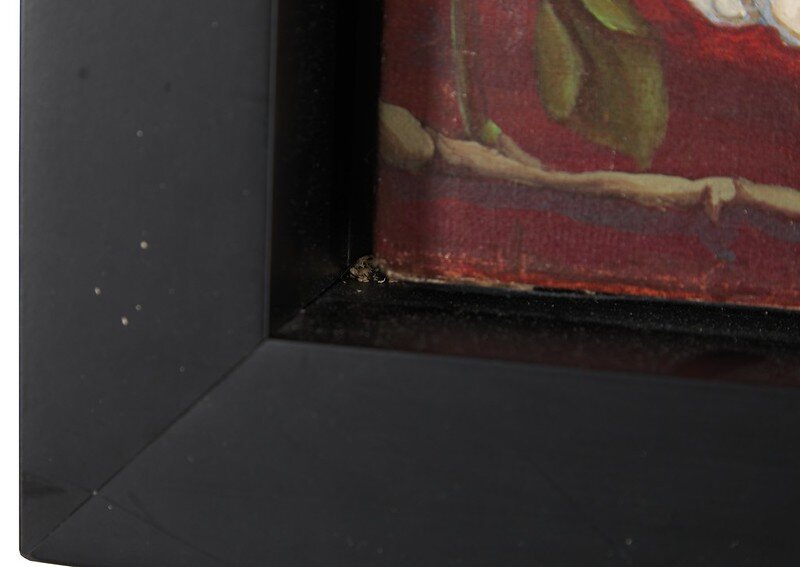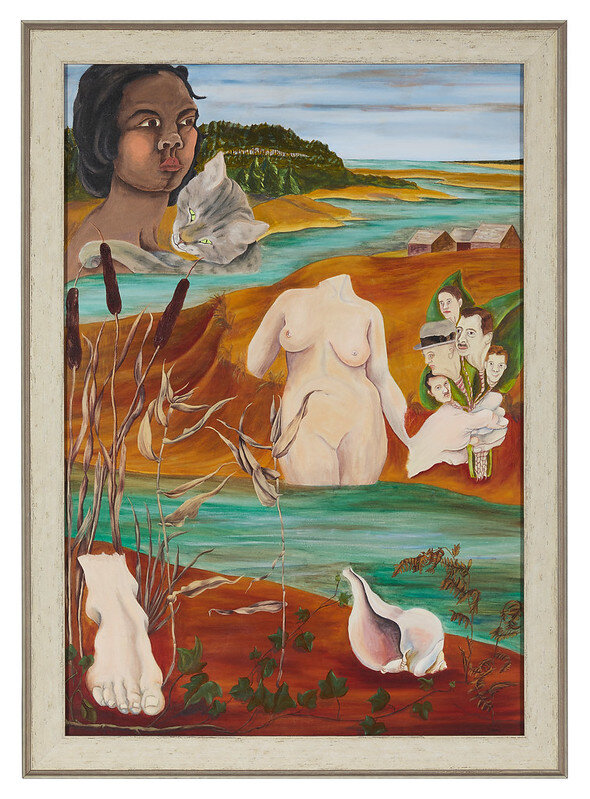Doris Lindo Lewis, 1940s. Image from The Boston Globe.
Doris Lindo Lewis was an artist with many different stylistic interests, perhaps due to her mixed cultural heritage and experiences living in Costa Rica, Cuba, Jamaica, and the United States. She started with traditional oil landscapes, experimented with surrealism and charcoal portraits, and ended her career with abstract expressionism. Art from her surrealist period is particularly loved; the Boston Museum of Fine Arts, the National Gallery in Washington, D.C., and LACMA are among the major art museums to boast a surrealist Lewis piece in their collections.
Before Treatment
Verso Before Treatment
Despite having her works hanging in major art museums across the US, Doris Lindo Lewis is a relatively unknown artist. Lewis never actively sought fame in the art world. Her daughter, Sydney Lewis Glover, told The Boston Globe that her mother “didn’t talk about her art” and recalled a time, in 1948, when Lewis burned many of her paintings. To Glover’s surprise, she found the surviving paintings under her mother’s bed after Lewis’ death in 1995.
Before Treatment in Raking Light to Show Canvas Distortion
One of the paintings that was spared from the flames is “Gaia with Love and Revenge,” which was recently brought to The Conservation Center for treatment. The painting was slack on its stretcher frame which caused a corner draw at the upper left corner. There was also debris between the stretcher and canvas, causing a bulge at the lower left.
Before Treatment in UV Light
“The paint layer had numerous areas of concern,” said Senior Paintings Conservator Michael Young. There were small networks of cracks in the cattails resulting from the way the paint dried. “These are also referred to as drying cracks,” he explained. There were also smaller areas of paint loss throughout the nude figure and the faces at the right of the composition. Most notably, a three-inch area of previously restored damage near the foot in the lower left no longer matched in hue or luster. This, along with other smaller areas, were previously retouched in an earlier restoration campaign.
Before Treatment- Detail of Corner
Before Treatment- Detail of Signature
First, Michael removed the debris from between the canvas and stretcher and properly tensioned the canvas to remove the deformations. Next, he consolidated the cracking paint with a reversible adhesive to help prevent future paint loss. Once the paint was no longer at risk of flaking, he cleaned the work using aqueous solutions formulated to safely lift the grime without damaging the paint layer.
After Treatment, Before Framing
The back of the canvas was gently cleaned using a textile sponge along with a brush and a low-power vacuum. Surface losses were filled and inpainted to best match the surrounding surface using reversible filler and paint colors. Finally, Michael coated the work evenly with a spray varnish to saturate the paint and provide a protective barrier layer. The painting was reframed in a new, cream-colored frame with a conservation grade backing board to help prevent future damage.
“I can tell you that we saw the painting for the first time last week after the restoration process,” our client told us, “and we were blown away! The piece is looking “alive” and vibrant again.”
After Treatment
Verso After Treatment











